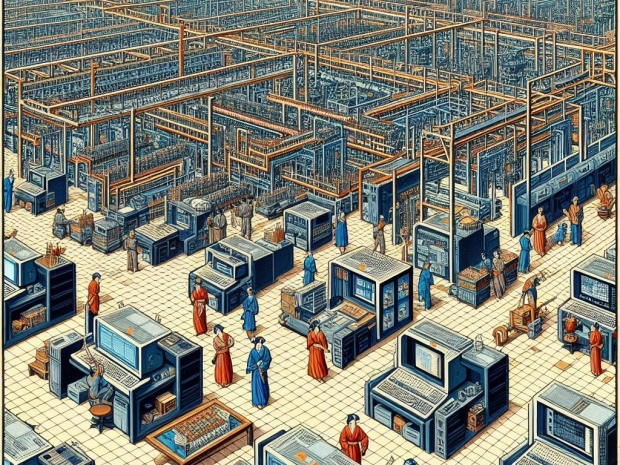Canon's challenge comes as Western governments try to stop China from acquiring the most advanced semiconductor technologies and as global demand for chipmaking machines has gone through the roof.
If successful, Canon's "nanoimprint" technology could give Japanese manufacturers back some of the edge they lost to rivals in South Korea, Taiwan, and, increasingly, China over the past three decades.
Canon's industrial group boss Hiroaki Takeishi said: “We would like to start shipping this year or next year... we want to do it while the market is hot… It is a unique technology that will enable cutting-edge chips to be made and cheaply."
First shown off in mid-October, Canon's nanoimprint lithography—a technology under development for more than 15 years but which the company says is only now good enough to sell—stamps chip designs onto silicon wafers rather than carving them using light.
The process, says Canon, will be "one digit" cheaper and use up to 90 per cent less power than Netherlands-based ASML's market-beating and light-based extreme ultraviolet (EUV) technology.
ASML has left rivals behind. It is the only group able to make the fancy EUV machines vital to producing the latest generations of chips at manufacturers such as Taiwan Semiconductor Manufacturing Company, Samsung Electronics in South Korea, and Intel in the US.
But the machines made by the Dutch tech company are also the most pricey part of the manufacturing process, costing more than $150 million each, and there are long waits for delivery, giving Canon some room to market its technology.
Takeishi said the goal was not to pinch share away from EUVs but to work alongside them and other technologies to help the industry grow. "
Although Canon is hopeful it can find a gap—focusing first on 3D Nand memory chips rather than more tricky microprocessors—analysts are doubtful of its impact.
Radio Free Mobile researcher Richard Windsor said the tech was old news.
“If nanoimprint technology was a better technology, I think it would have been working by now and in the market in bulk," he said.
One of the biggest hurdles for Canon is boosting its success rate in making smaller and smaller chips. It starts at the 5-nanometre—or billionths of a meter—node for circuit widths and aims to reach 2nm.
Takeishi would not say the potential yield—the share of chips made that are good enough to sell to customers—from the nanoimprint machines, but analysts have said it would need to be near 90 per cent to compete with EUV.
"As for defect risk, I think our technology has mostly sorted out the issue," Takeishi said.
However, since the existing chip manufacturing processes are made for EUVs, introducing new technology will cause various troubles.
The first deliveries will, therefore, be for trial runs, with Canon having to persuade customers that the hassle of fitting the new machines into existing factories is worth it. The company said significant layout changes would not be needed, but some extra kits, such as cleaning machinery and mask production, would be required.
Analysts hoped that Canon could flog the machines to China, which ASML can no longer do with its advanced tools because of US export controls. But Japan's export controls, made to match Washington, target advanced semiconductor manufacturing equipment more widely, making it hard for Canon.
"There aren't that many choices left but to pay close attention to this issue," Takeishi said when asked how much the company considered the risk of sanctions in making the nanoimprint lithography machines. It's got to a point where nobody knows where the risks are."




